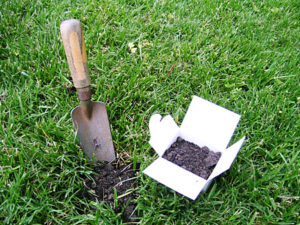Soil Test Now
go.ncsu.edu/readext?559790
en Español / em Português
El inglés es el idioma de control de esta página. En la medida en que haya algún conflicto entre la traducción al inglés y la traducción, el inglés prevalece.
Al hacer clic en el enlace de traducción se activa un servicio de traducción gratuito para convertir la página al español. Al igual que con cualquier traducción por Internet, la conversión no es sensible al contexto y puede que no traduzca el texto en su significado original. NC State Extension no garantiza la exactitud del texto traducido. Por favor, tenga en cuenta que algunas aplicaciones y/o servicios pueden no funcionar como se espera cuando se traducen.
Português
Inglês é o idioma de controle desta página. Na medida que haja algum conflito entre o texto original em Inglês e a tradução, o Inglês prevalece.
Ao clicar no link de tradução, um serviço gratuito de tradução será ativado para converter a página para o Português. Como em qualquer tradução pela internet, a conversão não é sensivel ao contexto e pode não ocorrer a tradução para o significado orginal. O serviço de Extensão da Carolina do Norte (NC State Extension) não garante a exatidão do texto traduzido. Por favor, observe que algumas funções ou serviços podem não funcionar como esperado após a tradução.
English
English is the controlling language of this page. To the extent there is any conflict between the English text and the translation, English controls.
Clicking on the translation link activates a free translation service to convert the page to Spanish. As with any Internet translation, the conversion is not context-sensitive and may not translate the text to its original meaning. NC State Extension does not guarantee the accuracy of the translated text. Please note that some applications and/or services may not function as expected when translated.
Collapse ▲Now is the time to soil test. A soil test is the best way to determine lime and fertilizer needs. However, the soil sample to be tested must be collected carefully.
First, go to your county N.C. Cooperative Extension Center and get a soil sample box and information sheet. This will give you the directions for taking and mailing the sample.
Then, using a small planting trowel or scoop, collect samples at 8 to 12 locations in your garden site or lawn. Collect the soil from a depth of 4 to 6 inches. Place the soil in a clean plastic bucket. Do not use a metal bucket. Detergents or other household cleaners in any bucket may contaminate the sample and give misleading information. Crumble up the soil and roll or tumble the bucket to give a good

A soil test is the best way to determine lime and fertilizer needs.
mixture. From this mixture, fill the soil sample box to the fill line. Carefully fill out the information sheet.
Avoid sampling in irregular areas in your garden, such as places where drainage water stands, where ashes may have been dumped, garbage buried or where old brick piles are located. In other words, sample areas that are representative of the garden site.
Mail your sample to the North Carolina Department of Agriculture & Consumer Services. You will find their address on the form. You should get the results of your soil sample about 10 to 14 days later. Soil testing is the only accurate way to determine lime and fertilizer needs. Before November, they will analyze your soil sample free of charge. This year for the first time, there will be a charge of $4 for all samples analyzed from November thru March.




